Celkem ujde  😁😊👍
😁😊👍
A beautiful gold necklace and other valuables in a rich Anglo-Saxon grave
Categories: Nálezy nejenom s detektorem ve Velké Británii a Irsku
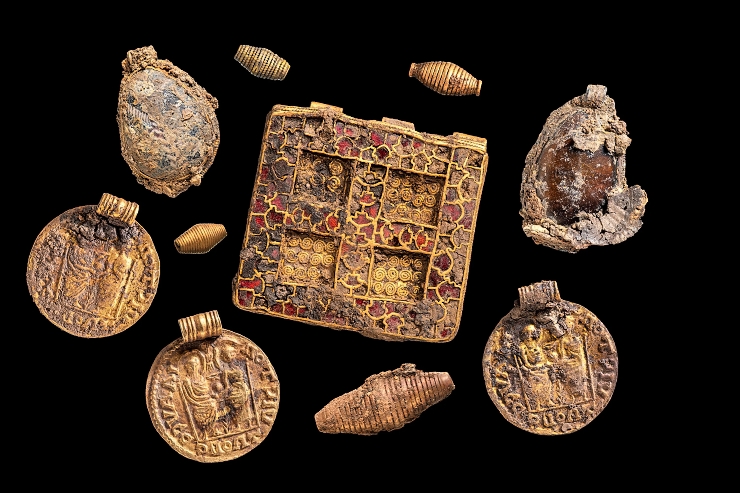
During rescue research prior to the construction of a new housing estate in the English village of Harvpole, a a rare seventh-century bed grave with the richest grave goods of the period ever found. The assemblage included a beautiful Anglo-Saxon necklace of gold, garnets and semi-precious stones, Frankish vessels and a massive silver cross with human faces.
The so-called "Harpole Treasure" (after the local parish in Northamptonshire) was found by archaeologists from the Museum of London Archaeology (MOLA). The find highlights the strong position of women of the Anglo-Saxon period in the transitional early Christian stage. A wealthy and respected woman, perhaps a noblewoman or abbess, died between 630 and 670 AD. The grave is considered the most significant burial from a turbulent period in English history when pagan and Christian beliefs were blended. The hoard also included a large silver cross, a shallow copper bowl and two Frankish decorated pots, one containing organic remains - the first of its kind from this period.
The gold necklace is the most lavish piece of Anglo-Saxon jewellery ever found in the UK. It is made up of 30 pieces and pendants - gold beads, garnets, glass and semi-precious stones and Roman gold coins. "The artefact was discovered on the penultimate day of an eight-week excavation," said Levente-Bence Balázs, the head of the MOLA dig, who was the first to spot the jewel glittering in the soil. Thinking he was digging a waste pit, he came across the rectangular pendant that formed the center of the necklace. "In 17 years of digging, this was the first time I found real gold," he said.
X-rays of the soil removed in a whole block revealed a finely decorated silver cross mounted on wood. The artifact also bore unusual depictions of human faces in silver. The organic matter found in the grave is thought to contain fragments of feathers and textiles or skin. The vessels are made in the Frankish style, originating in present-day France or Belgium. Archaeologists hope that molecular analysis will allow them to identify the organic remains in the vessels. The skeleton itself was completely decomposed - except for tiny fragments of tooth enamel. Archaeologists deduced that it belonged to a woman from the grave goods.
Experts attach a similar significance to the discovery as, for example, the the discovery of Basil Brown's legendary Sutton Hoo in 1939 or the Staffordshire Hoard discovered in 2009 by an amateur detectorist in a field in Staffordshire. "About 12 similar graves have been discovered in England so far, but only a few date from the 7th century. Unlike earlier graves, after the conversion to Christianity, burials with expensive valuables were frowned upon by the church," said Lyn Blackmore, MOLA's chief specialist. "The Harpole hoard is not the richest in terms of artifacts, but it contains the highest amount of gold and religious symbolism," she added.
Officials from the Museum of London Archaeology added that the study of the finds will take at least two years, after which the Harpole Hoard will be put on display for the public.
Roman Nemec
Sources: thehistoryblog.com, edition.cnn.com
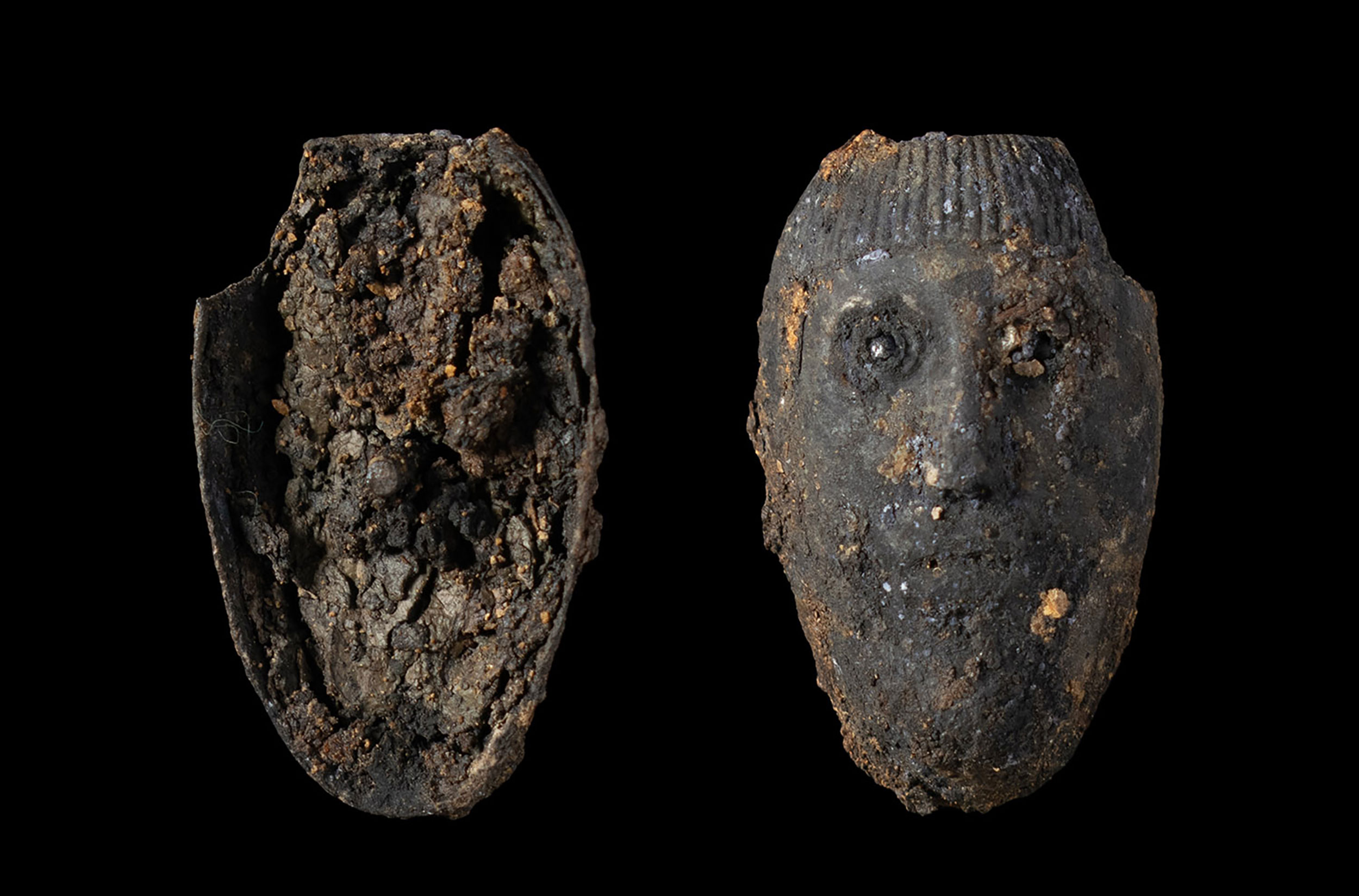
There were also miniature faces on the cross - masks
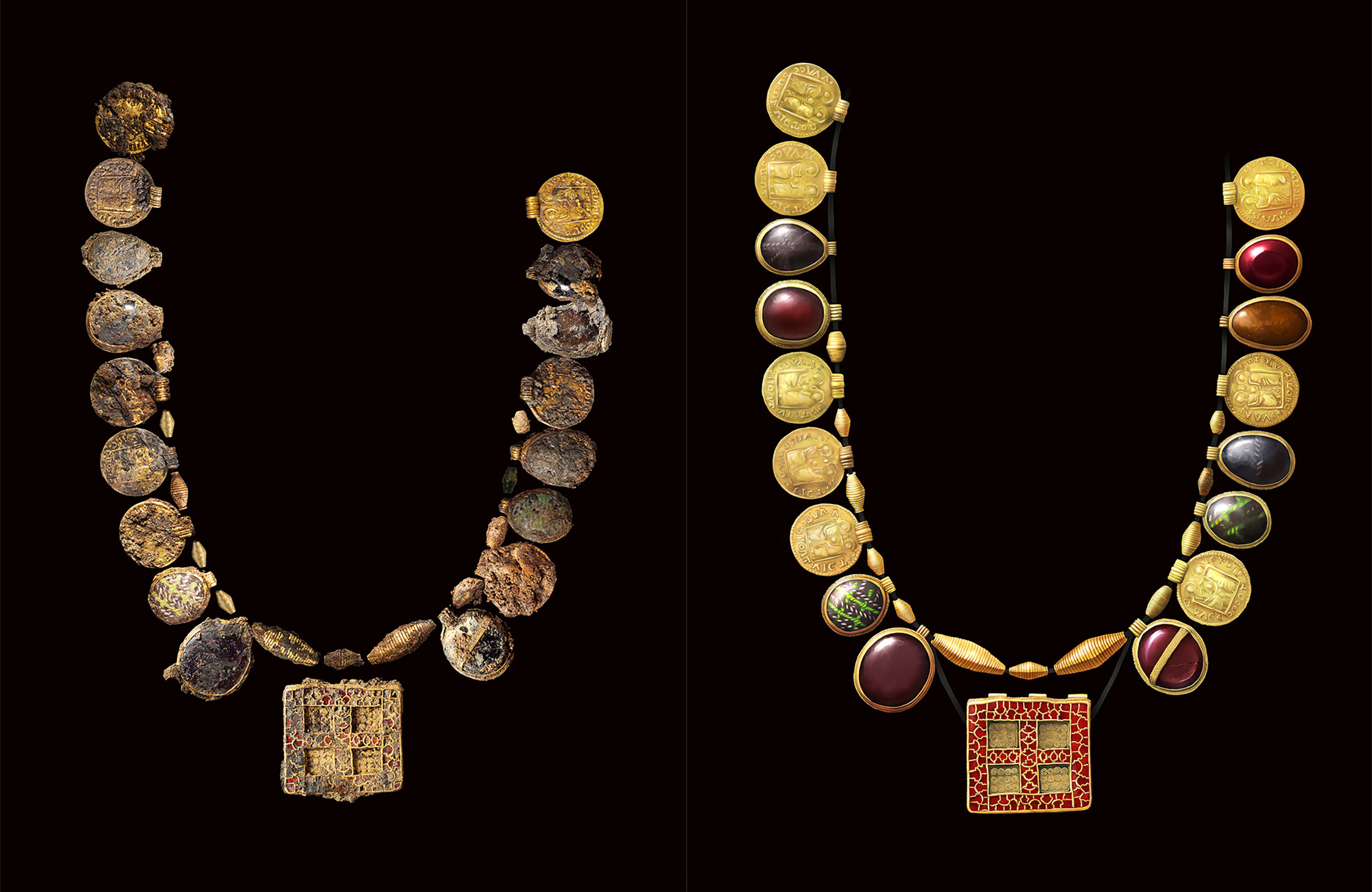
Necklace - on the left the real state and on the right a digital reconstruction
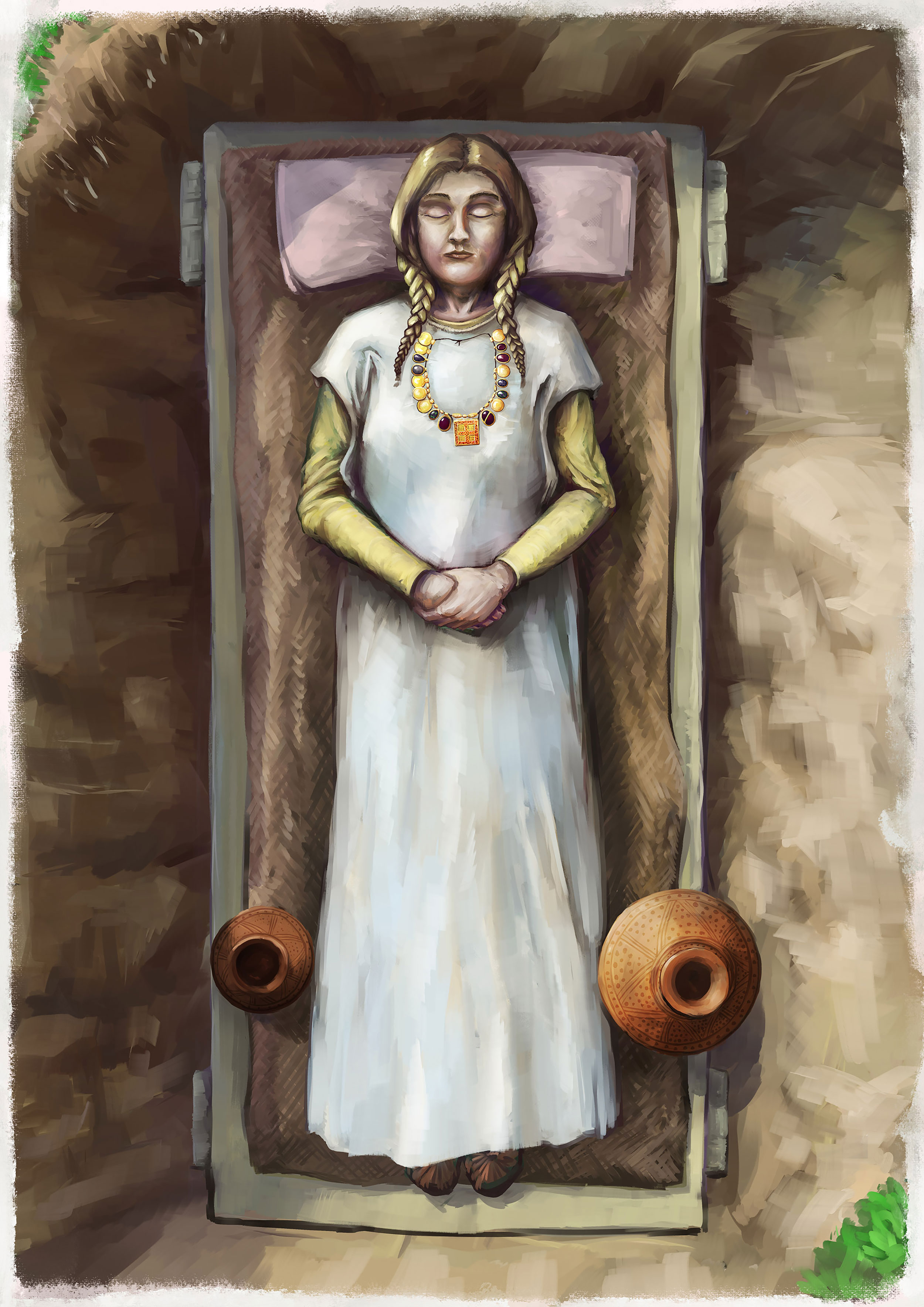
Reconstruction of a rich woman's bed grave
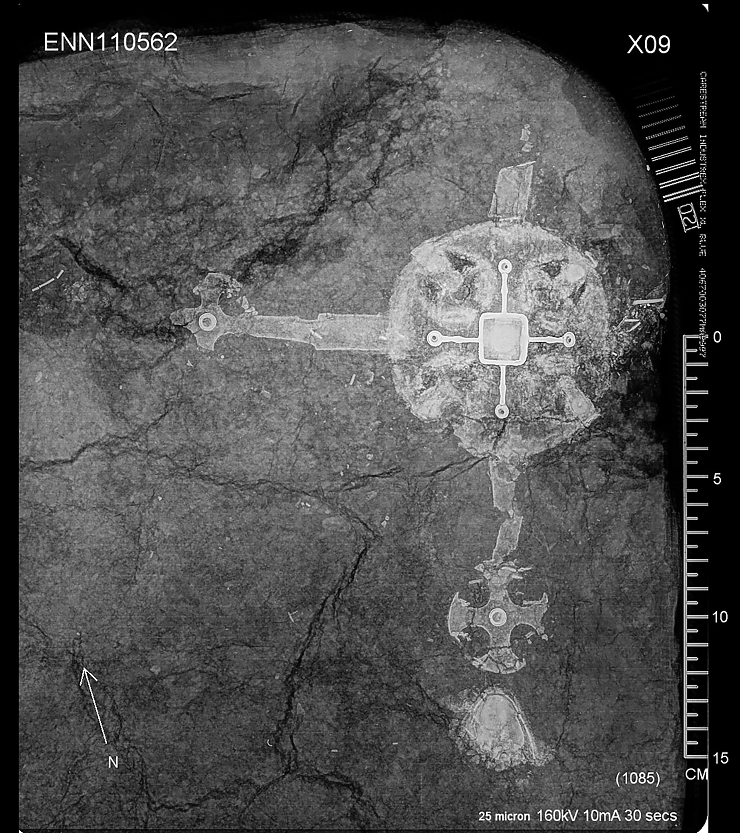
X-ray image of the cross with wood remains
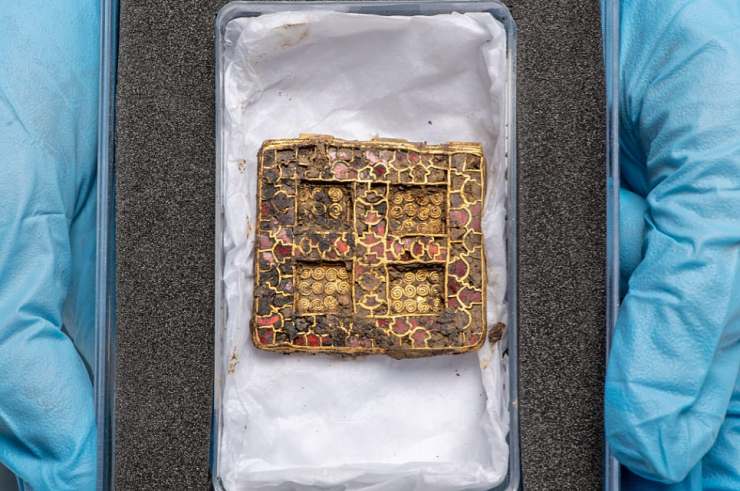 The centre of the necklace made of gold and garnets
The centre of the necklace made of gold and garnets
The article is included in categories:






